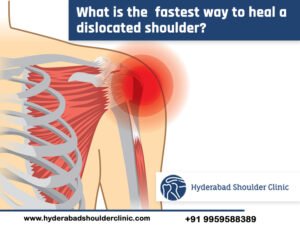Are you experiencing weakness in your shoulder and pain when you raise your arm above your head? Then it means you are suffering from shoulder impingement. Shoulder subacromial decompression, called acromioplasty, is a keyhole surgical procedure to treat this condition.
Shoulder impingement results from dysfunctional and damaged tendons that support the rotator cuff muscles. Tendons get damaged due to bony spurs or the genetic shape of the bones at the top of your shoulder.
Purpose of shoulder decompression surgery

Shoulder decompression surgery creates more space under your acromion by removing some of the bone and tissue. The acromion is a large bony projection on the top of the shoulder blade. This arthroscopic procedure is done under general anaesthesia. A small insertion is made in the shoulder through which a flexible tube with a tiny camera is inserted. With the help of the camera, the surgeon can get a clear picture of the shoulder joint, and then tiny surgical instruments are inserted through a second small incision. Through this second incision, the bone and tissue are gently removed from the underside of the acromion. In the same procedure, any damaged tendons are also repaired. After the surgery is done, the insertions are closed with sutures.
How long does it take to recover from arthroscopic shoulder decompression surgery?

After the effects of the anaesthetic have worn off, one can normally go home but should not drive. To reduce the soreness and stiffness of the shoulder after surgery, you can use ice and anti-inflammatories.
Total recovery from shoulder decompression surgery takes four months. For at least two weeks, pain and swelling are common. Applying ice and using pain medication helps to reduce swelling and pain. A sling would be good to protect your shoulder.
A physiotherapist will recommend exercises to improve movement and strengthen the muscles in your shoulder. Regular practice of these exercises should be done to relieve pain and prevent stiffness or recurrence. The rehabilitation plan contains gentle exercise, and the rehab plan will be given to suit your specific shoulder surgery.
How is the post-arthroscopic shoulder decompression surgery recovery life?
This type of surgery has produced good results, and patients have reported significantly reduced pain. But physiotherapy plays a huge hand in the post-treatment. After surgery, the surgeon will place a sling with a postoperative abduction pillow to protect the shoulder. One has to continuously wear the sling for 2 weeks. After the first 2 weeks, upon the doctor’s recommendation, you must wear the sling for a shorter period during the day. But please discuss the risks with your consultant to weigh the benefits against any possible disadvantages.
When can I go back to work/school/drive/eat?
Return to work/school/drive depends on the complexity of your surgery. You can return to everyday activities for a minor procedure in a few days. If the surgery was done on the right shoulder, you might have to wait up to 2 weeks for driving. Please wait for 4 to 6 weeks before doing any heavy work. When on pain medication, please do not drive or operate heavy machinery. One should return to sports very cautiously. Only after you receive heads-up from your operating surgeon and physical therapist, please consider returning to sports.
Apart from your regular follow-ups, please visit your healthcare provider for the following symptoms:
- Fever.
- Pain despite taking medications
- If the surgical site’s colour is changing or has a foul odour.
- Tingling or numbness at the surgical site.
- The swelling has increased.
Week-by-Week Physical Therapy
Weeks 0 to 2
- Flexion exercises.
- Rotation exercises at 45° with abduction to 30°
- Rehab exercises
- Pendulums
- Ball squeezes
- ROM for elbow, forearm and hand
- Gentle scapular retraction
- Submaximal isometrics
- Static perturbations in scaption (scapular plane elevation)
Weeks 2 to 4
- Continue flexion Exercises
- Internal and external rotation at 45 degrees abduction to WNL
- Internal and external rotation at 90 degrees abduction to 45 degrees
- From day 14 onwards, you can start an active range of motion
- Continue the above-mentioned rehab exercises.
Weeks 4 to 6
- One can also start Bicep curls, triceps kickbacks, and the exercises mentioned above.
- Initiate moderate-level CKC, like wall push-ups.
Weeks 6 to 8
During this week, there are no more limitations regarding your daily activities. Please continue all the exercises mentioned above. One can also start push-ups on a table.
Weeks 8+
One can think about yoga therapy and heavy upper body activities like swimming and racquet sports at week 20. Speak to your surgeon before returning to sports. Clearance from Your Surgeon is a must to play sports
Recovering from Arthroscopic shoulder decompression surgery is a combination of good and well-executed surgery along with physical therapy. Follow all the recommendations by our expert shoulder surgeon. Dr Chandra Sekhar B. He also has years of experience treating complicated shoulder problems for professional athletes. Please visit our website https://hyderabadshoulderclinic.com/ or contact us at +91 9959588389, shoulderandsportsclinic@gmail.com.





